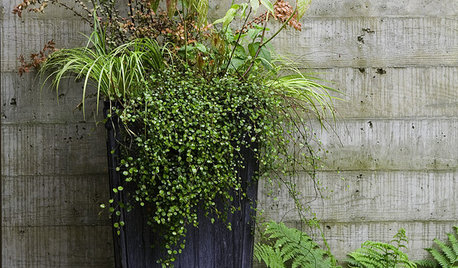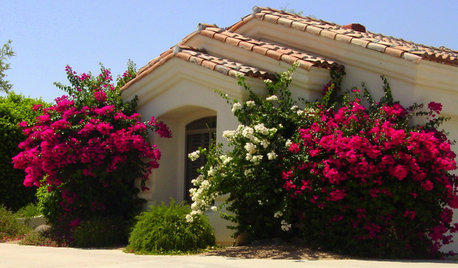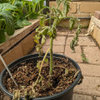Can someone ID this as Fusarium Wilt
mystere540
14 years ago
Related Stories

LIFETrue Confessions of a House Stalker
Letting go when a new owner dares to change a beloved house's look can be downright difficult. Has this ever happened to you?
Full Story
GARDENING GUIDESOh, Deer! 10 Native Flowers That Stand Up to the Herds
Keeping a garden amid hungry deer can be hard, but these plants should fare well
Full Story
GARDENING GUIDESThe Secret Formula for Grouping Plants in a Pot
Designing a gorgeous container garden is easy once you know this simple rule of thumb for composition
Full Story
EXTERIORS5 Pro Tips for the Best Home Exterior Updates
Knock your block's socks off with this professional advice to give your home's exterior a striking new look on any budget
Full Story
SUMMER GARDENINGHow to Grow Basil
Bright color, quick growth and endless uses for cooking make this summer annual a winner in the garden or a pot
Full Story
FEEL-GOOD HOME9 Ways to Boost Your Home’s Appeal for Less Than $75
Whether you’re selling your home or just looking to freshen it up, check out these inexpensive ways to transform it
Full Story
LANDSCAPE DESIGNGreat Design Plant: Sun-Loving Bougainvillea Showers Yards With Color
Bring unbeatable vibrancy to a garden or wall with this unfussy and trainable shrub packed with colorful bracts
Full Story
EDIBLE GARDENSSummer Crops: How to Grow Tomatoes
Plant tomato seedlings in spring for one of the best tastes of summer, fresh from your backyard
Full Story
GARDENING GUIDESEssential Watering Tips for Your Edible Garden
To give your edible plants just what they need, check out these guidelines for how, when and how much to water
Full Story
FEEL-GOOD HOME21 Ways to Waste Less at Home
Whether it's herbs rotting in the fridge or clothes that never get worn, most of us waste too much. Here are ways to make a change
Full StoryMore Discussions








mystere540Original Author
jean001
Related Professionals
Quincy Landscape Architects & Landscape Designers · Towson Landscape Architects & Landscape Designers · Wixom Landscape Architects & Landscape Designers · Battle Ground Landscape Contractors · El Reno Landscape Contractors · Fuquay-Varina Landscape Contractors · Harrisburg Landscape Contractors · Middleton Landscape Contractors · Plymouth Landscape Contractors · Sun Valley Landscape Contractors · Hawaiian Gardens Landscape Contractors · Bethany Siding & Exteriors · Lenexa Siding & Exteriors · North Hollywood Siding & Exteriors · Woodbridge Siding & Exteriorspetzold6596
mystere540Original Author
jean001
mystere540Original Author
jean001
organic_jeannie
organic_jeannie
flgrower
flgrower